Sustainable Land Management Project I, Ethiopia (SLMP-1)
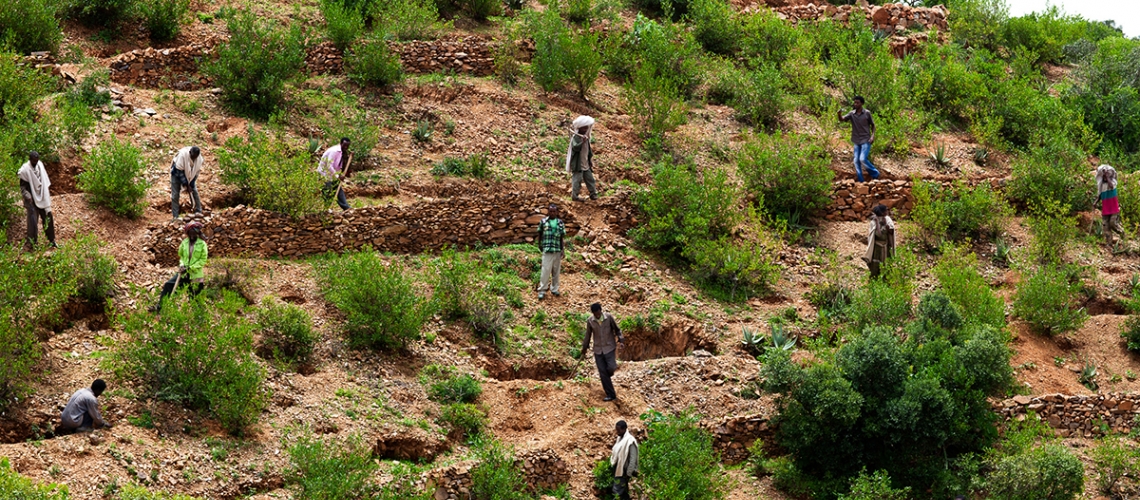
Summary
The core principle of the SLMP project (1 and 2) was that integrated sustainable land management interventions in watershed landscapes supported by land certification and institutional capacity development would provide incentives for community participation and smallholder investments that would lead to a reduction in land degradation and improved productivity on communal and household farmland.
Agriculture is one of the most significant economic sectors in Ethiopia, where nearly 85% of the population depends on agricultural activities as their main source of livelihood (World Bank, 2020). However, long-term land degradation across the country has been putting at risk this and other related sectors, leading to declining agricultural productivity, high rates of rural poverty, and food insecurity problems. According to the World Bank, most of the causes behind land degradation are linked to the state of farming systems, the open access to grazing for livestock production, the expanding agriculture into forest areas, added pressures of population growth, and the high dependency of local people on wood and other biomass for energy production, which are fast accelerating this condition as well as soil nutrient depletion.
To address this land degradation issue across the highlands and increase land productivity, the Ethiopian government has embraced Sustainable Land Management (SLM) approaches. Supported by the TerrAfrica partnership, it developed the national Ethiopia Strategic Investment Framework for SLM. This solution is one of the two constituents of the larger Sustainable Land Management Project (SLMP) implemented in the country during the period 2008-2018, and that emerged as part of the World Bank’s support for the Sustainable Land Management Program (SLM) of the Ethiopian government. The SLMP was created from the theory that transforming cultivated agricultural land and non-cultivated communal land in watershed landscapes through SLM, can address land degradation and boost land productivity, and that by supporting these measures with land certification and added institutional capacity, would provide incentives for more community participation and investments from smallholders.
The SLMP-1, also called Project 1, had the objective to reduce land degradation in agricultural lands and enhance the productivity of smallholder farmers, as well as protect and restore ecosystem functions and diversity in agricultural landscapes. Three components contributed towards achieving these objectives:
- Component 1: Watershed management. This was the main element of the SLM initiative and resulted in the reduction of land degradation, enhancement of land productivity, and improvement of livelihoods and the environment. The achievement of objectives was measured by accounting for the changes in vegetation cover, increase in soil carbon, and the total area treated with SLM practices.
- Component 2: Rural Land Certification and Administration. This component had the intention to expand the coverage and enhance the government’s land certification program to strengthen land tenure security for smallholder farmers in the project area. In total, the project issued second-level certificates to 59,999 households. Additionally, the project also financed land certification interventions.
- Component 3: Project Management. This component had the objective to assist the Ministry of Agriculture and other corresponding institutions in distinct activities like an appraisal, coordination, implementation, monitoring, and evaluation. It provided considerable support towards the effective and efficient implementation of the Watershed Management component (component 1) by enhancing technical capacities at the regional, local, and community levels.
Read about SLMP-2 here.
Overview
- Location:
- Implementation sites:
-
- Single country
- Multiple locations
- Mountain region:
-
Simien mountains, Ethiopia highlands
- Province:
-
- Ahmara, Oromia, SNNPR, Tigray, Gambella, Benishangul-Gumuz
- Site locations:
-
10 watersheds in the Ahmara region, 14 watersheds in Oromia, 10 watersheds in SNNPR, 4 watersheds in Tigray, 3 watersheds in Gambella, and 5 watersheds in the Benishangul-Gumuzs region.
- Solution scale:
- Ecosystem type(s):
- Solution type(s):
- Other climate impact(s) addressed:
-
- Land degradation
- Climate impact time-scale(s):
- Main benefit associated with the solution:
- Co-benefit(s) associated with the solution implementation:
- Implementation timeline:
-
- 2009 - 2013
Solution details
Main beneficiaries & outcomes
Main beneficiaries targeted by the project included an estimated 98,000 rural households within the 45 watersheds where the project’s components were implemented. These were located in six Regional States of Ethiopia: Amhara, Oromia, Tigray, SNNP, Beneshangul/Gumuz, and Gambela. The population beneficiated from improved soil retention, enhanced carbon sequestration, increased vegetation cover, improved water management, and increased farmer incomes. Moreover, thanks to the capacity-building activities carried out during the project, technical staff at the central (Ministry of Agriculture), regional (Woreda), and district (Kebele) levels beneficiated as well from training and improved working conditions.
The SLMP-1 was gender-sensitive, it focused on ensuring the equal and fair benefits to and participation of both women and men in the different activities implemented. Specifically, components 1 and 2 created opportunities for female-headed households. Women’s participation in watershed development was relatively higher than in other regular local development programs. In addition, unemployed habitants and youth also received assistance for the establishment of user groups to promote engagement in the protection and utilization of communal cropping areas.
Planning and implementation
The preparation of the project initiated in 2006, taking advantage of Ethiopia’s past experiences at implementing SLM approaches, as well as some of the lessons learned in other projects involving Natural Resource Management at different parts of the world.
During the first steps, the technical, operational, and institutional risks were identified, and adequate mitigating measures were proposed. Later, to secure the solutions’ effectiveness, a Project Implementation Manual was created. Implementation officially started in March 2009 within an overall conceptual and operational framework developed during the preparation process and ended in September 2013 as it was initially planned. A full time National Program Coordinator was appointed to oversee implementation. Yet, the Regional Coordination Units took charge of the day-to-day management of the measure’s implementation in their respective regions, including the preparation of annual work plans, progress reports, monitoring, supervision of progress, evaluation of program’s impacts, financial administration, and the procurement of goods and services.
Main works carried out during the implementation by component included:
- Watershed management (component 1): Physical and biological farmland treatments, gully rehabilitation and treatment, forestation activities, water harvesting, construction of irrigation canals, community ponds, potable water points, check-dams, and farmland terraces, high-value crops promotion, construction and maintenance of access road, land certification, among others.
- Rural Land Certification and Administration (component 2): Manual and computerized registration of individual farm landholding and rural communal land, issuing first level certificates for individual farmlands, rural communal land, and institution holdings, production of parcel and district index maps, issuing 2nd level certificates for land holdings, awareness raising events, training on land administration topics to district authorities and committee members, training on GIS to experts at all levels.
- Project Management (component 3): Contributed to ensure that the SLM project adhered to the government policy of full participation of end users in the project execution, sought to involve the population in the development of solutions, and ensured their consultation, particularly in the planning, implementation and operation stages.
Finance
The original cost of the SLMP-1 was estimated at US$37.8 million, comprising a US$20 million grant from the International Development Association, US$9 million grant funds from the Global Environment Facility (GEF), and US$8.7 million counterpart funds from the Government of Ethiopia. However, the actual cost was reduced to US$29.16 due to non-disbursed balances at project closing, and a reduction in counterpart financing.
Costs by component in US million:
|
Component |
Allocation |
|
Watershed Management |
22.2 |
|
Land Certification and Administration |
3.93 |
|
Project Management |
2.87 |
|
Total |
US$29 million |
During the project’s preparation process, a cost-benefit analysis was conducted for 25 years using a discount rate of 10% (with a 7% rate included for comparison). The Level of net erosion prevented (ton/ha/year), increased soil carbon from borrower report (ton per ha), a normalized difference vegetative index, and yield increases were used as indicators. Despite conservative estimates and only a portion of the benefits quantified, the results of the analysis showed that the project had significant returns.
Innovation
This solution was considered innovative, integrative, and inclusive, given that land degradation, climate risks, and productivity issues were addressed through efforts from a landscape approach, while also contributing to the general benefit of the agricultural sector. Moreover, the type of approaches and measures included within the project activities were at the time untested in Ethiopia, increasing its relevance and the overall interest of the World Bank for its implementation.
Performance evaluation
The Regional Coordination Units were in charge of creating annual progress reports detailing progress against annual targets, as well as evaluating program impacts. Additionally, two years after the initiation of the SLMP-1 and 6 months before completion, in March 2011, the World Bank performed a mid-term review, that despite not been accompanied by an independent assessment, the obtained results led decision-takers to agree on a project restructuring for better progress towards the project’s objectives. Such restructuring included the revision of selected intermediate indicators (the number of land certificates issued) and target values (percentage of growth of agricultural productivity) in the Results Framework.
Finally, after the finalization of activities, a project performance assessment was carried out by the Independent Evaluation Group (IEG) of the World Bank where projects 1 and 2 were considered. This assessment used a mix of methods including desk-based document reviews, field-based semi-structured group, and individual interviews, discussions with Woreda (regional) and watershed or micro watershed institutions, and site visits for verification of the establishment and maintenance of the SLM infrastructure.
Long term project sustainability and maintenance
The project monitoring and evaluation activities were under the charge of the regional coordination units, which also took the responsibility of supervising the overall implementation progress, evaluating program impacts, the financial administration, and procuring the necessary goods and services. However, the official Implementation Completion and Results Report indicates there was limited functionality and use of the monitoring and evaluation system due to the lack of sturdy baselines. These added to some difficulties encountered at the local levels for collecting and reporting on progress (low institutional capacity, insufficient technical know-how, persistent staff turnover, equipment and communication deficiencies, etc.) which affected the project’s progress and the overall achievement of objectives.
In spite of these problems, each district and region annually presented an extensive list of targets for field activities, which served to report program progress in a relatively effective way. Still, as targets were changed each year, the value of obtained information during this process was limited. Nevertheless, intermediate targets and indicators were also established and measured, and specific outcome-based surveys were conducted to demonstrate the positive effects of the project.
Capacities for design and implementation
Knowledge
Ethiopia’s experience obtained from the implementation of a pioneer Sustainable Land Management in 2006 by the World Bank and other development partners, provided valuable initial knowledge for the preparation of this solution. Likewise, previous lessons and experiences resulting from past Natural Resource Management projects in Africa and other parts of the world also furnished useful information. Moreover, to complement and enhance this information, technical, operational, and institutional risks were also adequately identified, and mitigating measures proposed.
The knowledge capacity was a benefit provided to the involved communities at all levels, especially for the topics of land registration and administration (component 2) resulting from training and knowledge exchange visits from experts and decisions-makers. Regional and local awareness on the relevance of land administration was also generated. However, the final project report indicates that technical know-how, knowledge assistance, and insufficient knowledge transfer as well posed problems in several instances. In the specific case of Component 1, limited knowledge to protect ecologically critical habitats such as stream banks and wetlands were barriers in some intervention areas. While for component 2 (Land certification and Administration), the existing technical knowledge was overestimated, impacting the implementation of measures and leading to the short achievement of targets.
Technology
Technology was an important element for the implementation and success of the solution, especially for the integrated watershed and landscape management (component 1). Component 1 assisted the participatory process of adopting and scaling up sustainable land and water management technologies and practices, and supported activities to promote and adopt low-carbon, climate-smart technologies by smallholder farmers and local communities in the selected watersheds and districts. This contributed to various benefits, including the reduction of soil erosion and increased percolation. Some of the technology-related services and activities carried out as part of the solution included: cadastral surveying mapping and photogrammetric techniques, horticulture, and other technologies. For the component 2, different technologies and methodologies were useful to the support of rural land certification trials, which assisted on the agreement of a common, cost-effective approach and methodology for second-level certification in line with international best practices. Such a methodology was later applied in the implementation of SLMP-2.
Finally, remote-sensed satellite data was employed to verify performance indicators of land restoration in the micro watersheds were activities were carried out.
Political / Legal
The role of existent governmental plans and programs was a highly important aspect for the existence and success of this solution. At the national level, the need to address land degradation and tenure security (a major constrain for land user’s investment in SLM practices) was considered a primary pillar in several key strategic documents, including the Sustainable Development and Poverty Reduction Program (SDPRP 2000-2005), the Plan for Accelerated and Sustainable Development to End Poverty (PASDEP 2006 2010), and the Federal Rural Administration and Use Proclamation (2005). Furthermore, the creation of the Ethiopia Strategic Investment Framework for SLM (also known as SLM Program), reflected the government’s new programmatic approach to scaling up SLM solutions, providing a platform for the existence of this project.
Added to the intention to support the SLM Program in the country, this solution also looked to complement the public works component of the Productive Safety Net Project, which focused in the implementation of structural SLM measures in food insecure areas. The individual components of the solution where equally designed with the aim to support already existent national strategies. Such is the case of the component 2 (Rural Land Certification and Administration) which intended to enhance and expand the government’s land certification program, and component 3 (Project Management) which looked to assist the Ministry of Agriculture and the regional, district, and local authorities to coordinate not only this solution but also the broader SLM Program.
Institutional
The institutional capacities of the World Bank were crucial for the implementation of the project thanks to its strong policy dialog with governmental authorities, convening power with the project’s partners, and its involvement across several sectors affected by land use and management. Moreover, the SLMP from which this solution is part included a training and capacity building program that contributed to improving the technical knowledge and raised awareness on the importance and benefits of SLM, both within public institutions at the regional and district level, as well as in beneficiary communities and farmer organizations.
In the case of the SLMP-1, component 3 (Project Management) assisted local and regional authorities, as well as the Ministry of Agriculture to support the coordination of activities for this project and the overall program. The institutional risks were initially identified in the preparation process. Yet, low institutional capacities at the district and local levels represented some of the major difficulties for the project’s implementation and monitoring, including problems for collecting and reporting on progress at the local level. The final Implementation Completion and Results Report, assessed the performance of the implementing agencies as moderately satisfactory, with limited coordination capacities despite the intense training and capacity building efforts due to insufficient staff member to perform related tasks.
Socio-cultural
The role of the social context in the project can be largely attributed to the awareness raising on the importance of SLM approaches, enhanced at different levels including within the local communities.
One significant characteristic of this solution was its contribution towards improving the empowerment and social capacities of the beneficiary communities by creating strong ownership through participatory decision-making processes. Furthermore, community members directly assisted the execution of measures by having remunerated involvement in the implementation of most of the physical activities including afforestation, terraces and bunds construction, water harvesting, etc.
Outlook & Scalability
Barriers and adverse effects
In the initial steps, the solution design faced the challenge of aligning the World Bank’s operations with the broader SLM Program that was being developed by the national government in parallel and was supported by various donors. The project’s two major components (Watershed Management, and Rural Land Certification) focused on investments in selected watersheds and were supported by the fiduciary-oriented third component (Project Management). This left most of the support for policy development, knowledge management, and technical assistance to other sources of funding which were unconfirmed at the time of appraisal and not included in the project as co-financing or parallel financing. Later, during the first two years of implementation, the project showed slow implementation progress. In 2011, the restructuration of the project helped to achieve a better relocation of funds among categories and provided a waiver for the use of grant funds.
Other barriers were observed in the project implementation, that despite not severely affecting results, made the process difficult and slow, especially during the first two years of the project. Constraints included: inadequate monitoring and evaluation capacities and poor financial management and procurement capacity at the district level, high staff workload and turnover at the local level, and lacking working conditions (lack of transportation and internet access). In addition, despite the existence of a Project Implementation Manual, this was bulky and clumsy to use, with unclear roles and responsibilities on fiduciary matters that did not contribute to harmonizing technical and operational procedures, and reporting requirements among the different partners. However, some of these issues were only reported after the completion of the SLMP-1 and could not be overcome.
Finally, difficulties for assessing progress and achievements were also present due to certain disconnects between the Project Development Objectives and components, excessive reliance on agricultural productivity increases as a key measure to determine land degradation achievements, and the lack of a timely and appropriate baseline. The mid-term review mission in March 2011 aided in reducing these issues by revising some selected intermediate indicators including target values in the Results Framework, and the addition of one intermediate indicator on soil carbon.
Transformation and future outlook
The implementation of this project has assisted to lay the groundwork for improved performance of the broader Sustainable Land Management Program from which it was part. Lessons learned through the different implemented activities did not only help in the design of the following second phase of the program (SLMP-2), but also aided decision-takers in the pursuit of a more focused program that promotes a landscape approach for reducing poverty in rural areas, promoting equitable growth, enhancing climate resilience, and ameliorates both local and global environmental public goods.
Potential for upscaling and replication
The positive and promising results of this project (SMLP-1) at the different participating levels (farmers, rural communities, and public institutions at the central, regional and local levels), as well as the support from other partners have influenced the decision of the national Ethiopian government, through the Ministry of Agriculture, to continue on the efforts to implement the SLM approach in the agricultural sector. The government authorities then requested a new World Bank financed operation (SLMP-2). This second project aimed at upscaling and consolidating the pioneering efforts and achievements of the SMLP-1 project.
Please refer to the SLMP-2 description for further information.
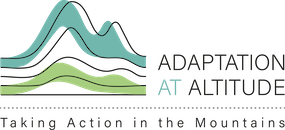
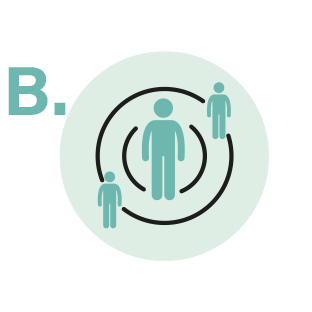
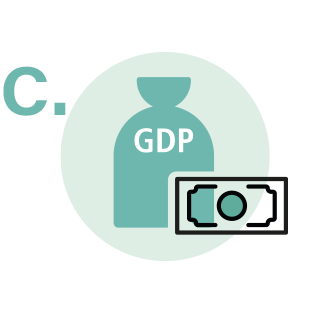
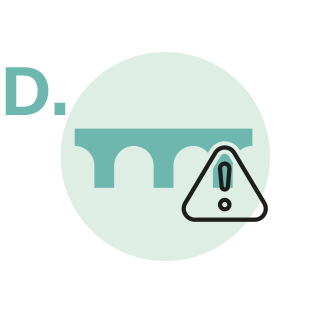
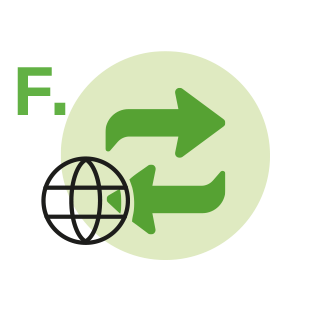






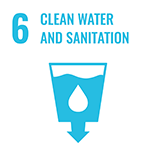


Comments
There is no content